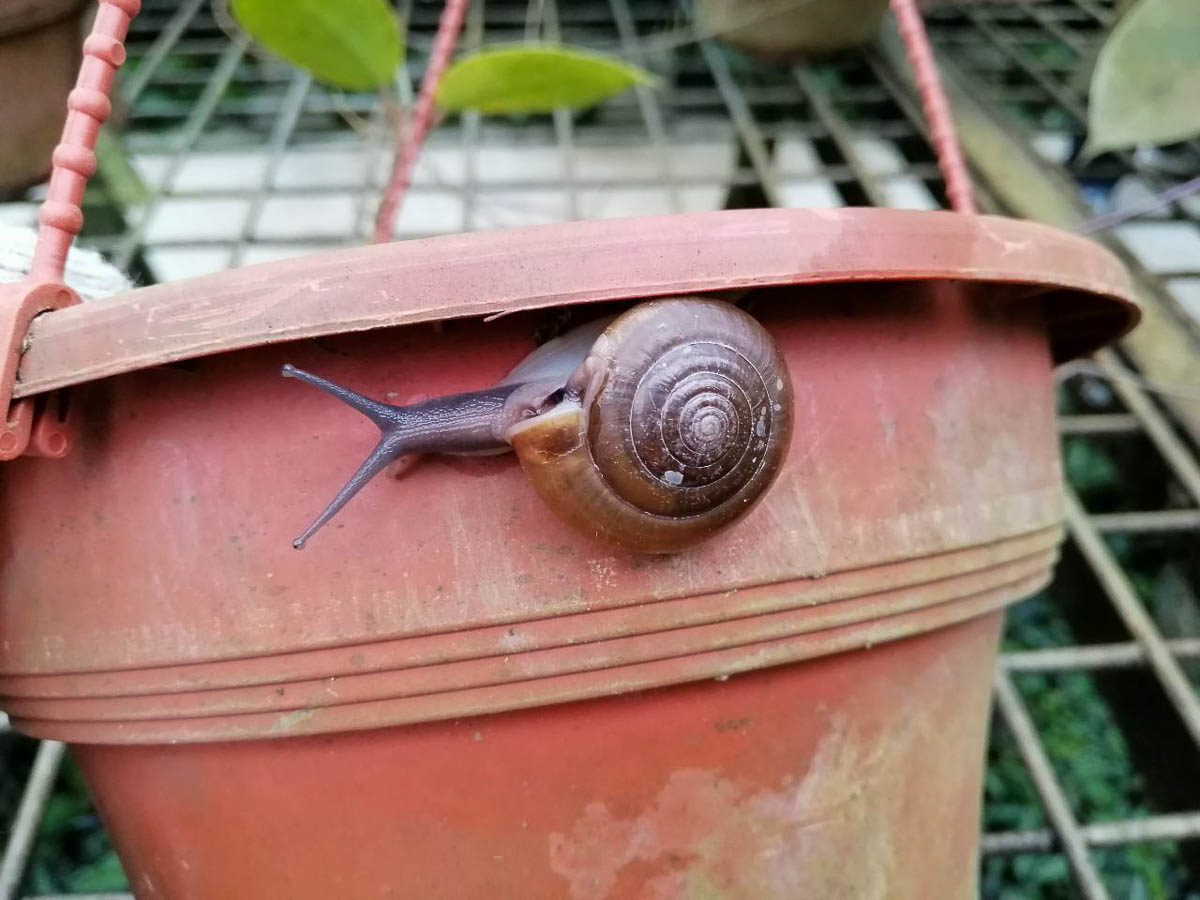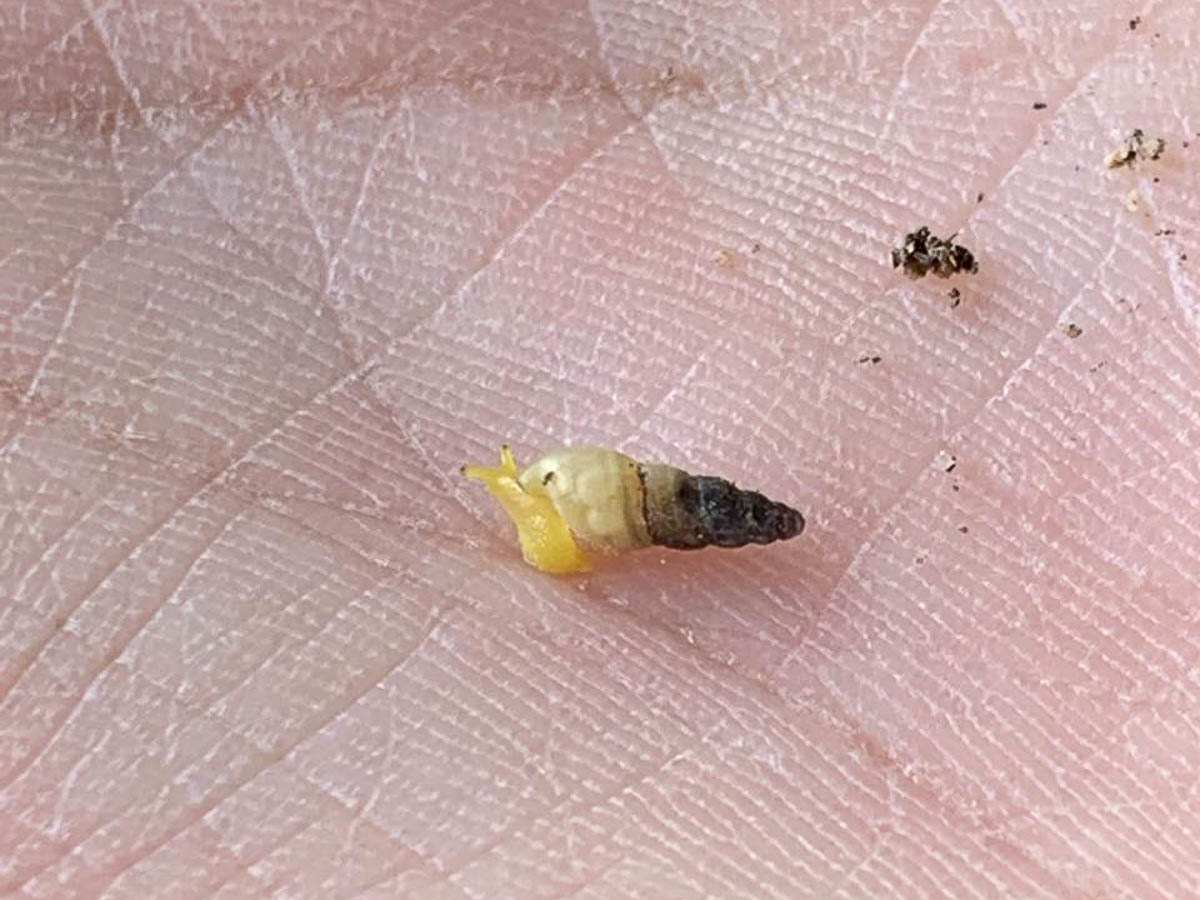Snails and Slugs
Snails and Slugs (Order Stylommatophora)

Slugs and snails are members of the Mollusc phylum and are similar in biology and behaviour. The main difference is that slugs do not have an external shell that snails do. They move around with their muscular “foot” and constantly secrete mucus to help them glide along surfaces. This mucus dries to produce a silvery slime trail. They have a flexible band of thousands of microscopic teeth called a radula, that they can use to scrape along plants as they eat.
victorialim.jpg)
Slugs and snails thrive in wet and cool environments away from the sun. During the monsoon season, many of them will be active after heavy rains.

They are nocturnal pests that feed on plants by scraping, feeding on the juiciest vegetables and fruits they can find. The most common snails that are found in Singapore’s gardens are the African Land snail (Achatina fulica) and Awl snail (Allopeas clavulinum).
Symptoms

Slugs and snails leave behind large, ragged holes on tender leaves and flowers, and can sometimes completely eat new shoots and seedlings.
They leave behind slime trails that are often spotted in the morning, but tend to dry out by the early afternoon.
Preventive and control measures:
.jpg)
Using collars with sharp edges (pictured above) can protect young plants as snails are less likely to climb over the sharp edge.
Placing netting or cloches over planter beds can protect your plants from large pests in general.
Remove slugs and snails by hand and dispose of them.
Heating the soil by placing black plastic mulch over soil and letting it heat up in the sun for two weeks is an effective way to kill snail eggs.
Encourage predators to establish in your garden by keeping it pesticide-free. Birds feed on snails and can keep their population under control.
Avoid using salt to kill the slugs and snails as it can result in high soil salinity, which affects the uptake of nutrients by plants. Use of snail bait is not encouraged as it is not only highly toxic to snails and slugs, but also to humans and pets.

